If you tested your DNA with both Ancestry and 23andMe, you might be asking why your results are different, and which are most accurate. In this post, find the answer.
I'll even walk you through a side-by-side comparison of Ancestry vs. 23andMe results so you can judge for yourself, once you have seen the explanation behind the differences, as well as similarities.
Many people find themselves taking a DNA test with more than one company to find more DNA matches, or to learn more about where their ancestors might have lived. Since Ancestry DNA and 23andMe are the most popular DNA testing companies, these are the two companies that people most often compare.
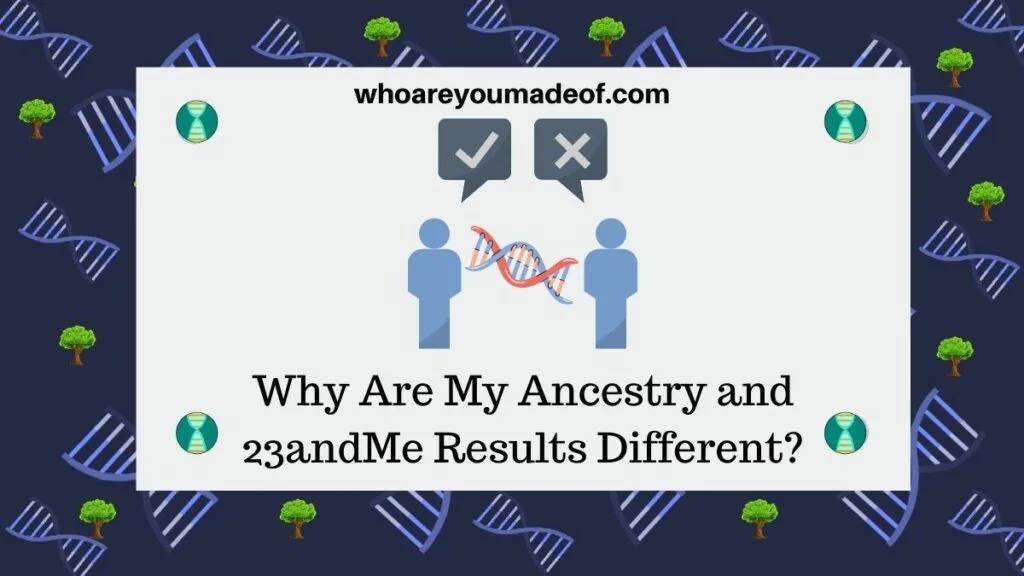
Interestingly, many people actually want to discover something different in their results through their new test. When we do, we wonder why the other company didn't report it in on our results.
There are several explanations that will help you learn why your 23andMe results don't look exactly like the ones you got from Ancestry. Plus, you'll discover ways in which your results really aren't as different as they appear at first glance.
Why your Ancestry and 23andMe results are different
There are three main reasons why your 23andMe and Ancestry DNA results appear to be different. In short, the differences come down to choice of words used to describe a region, geography, and the science behind the testing.
Both 23andMe and Ancestry define their regions differently
First, each company defines the geographic regions that they show on results differently. This means that they might group countries into larger regions, or have a region that covers only a portion of one country.
For example, on 23andMe, Italy is covered under Southern European. On Ancestry, Northern Italy has its own region.
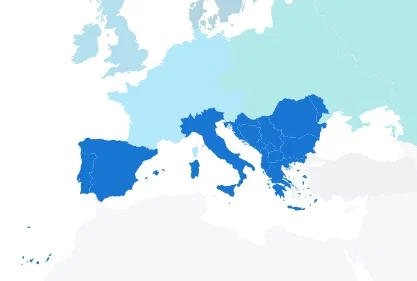
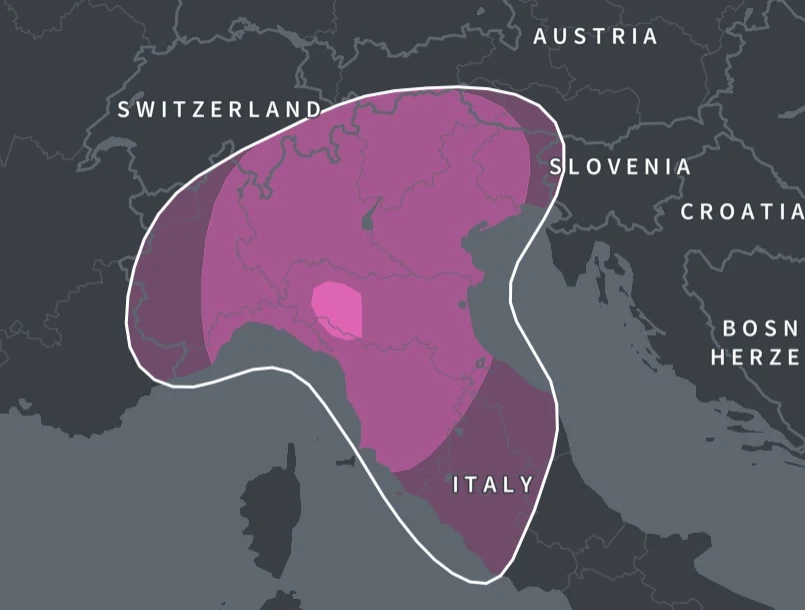
This means that if you have ancestry in Northern Italy, you might have gotten Broadly Southern European on 23andMe and Northern Italy on Ancestry. It wouldn't make either result necessarily more correct - they are just different.
Similarly named regions cover different geographic areas
Each DNA testing company might use a different name for the same, or similar, region. With almost every region in the world we can see differences between the countries included.
If we take a look at the maps and lists of countries that each company provides with their results, we see that North Africa on 23andMe includes Libya, Tunisia, Morocco, and Algeria. On Ancestry DNA, the North Africa region includes all of those countries as well as Niger, Mauritania, and Western Sahara.
Algorithms and reference panels used by 23andMe and Ancestry contain different data
Finally, the reference panels used by Ancestry DNA and 23andMe to determine your ethnicity, or ancestry, contain different DNA samples.
As of 2023, the Ancestry DNA reference panels are made up of data from 56,580 DNA samples. In order for a DNA sample to be included in the Ancestry DNA reference panel, the person must have genealogical documentation proving a long family history in the region where they live and their DNA must also match that region.
The process that 23andMe uses to form their reference datasets is similarly rigorous and comprehensive. Currently, the 23andMe reference dataset contains DNA information from 14,437 individuals, and also references three major public reference datasets.
Even though both companies go to great lengths to ensure that the data that their ethnicity estimates are based on are as accurate as possible, there will be differences in their coverage of all of the world's regions.
Despite this fact, we should not see major differences between results due to different in underlying data. For example, we could expect a neighboring region with a similar genetic history to show up instead of what we might expect.
It is unlikely that a difference in reference DNA samples would lead to someone showing a high percentage of DNA matching an entirely different continent in error, however.
Comparison of Ancestry and 23andMe results
Below, find a comparison of the 23andMe and Ancestry DNA results belonging to the same DNA tester. Overall, the results appear very similar.
Take a look for yourself:
Example of 23andMe results
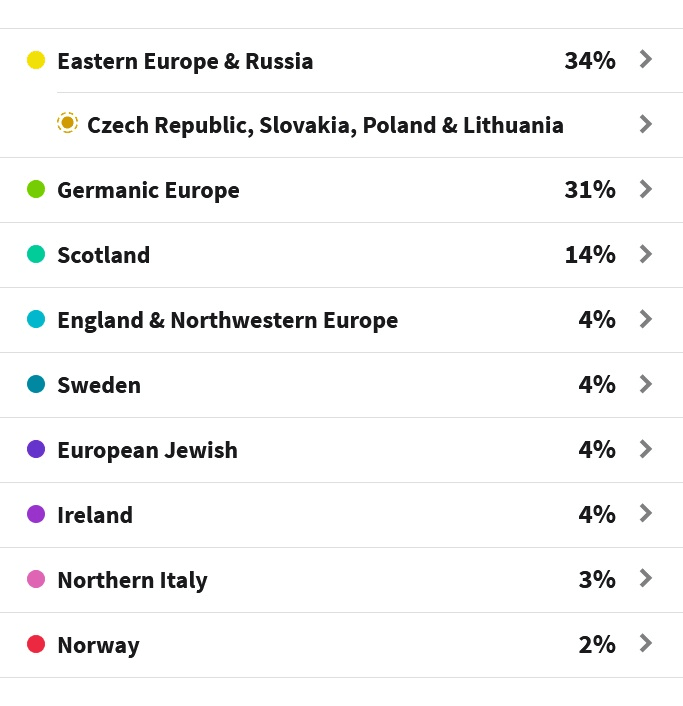
Example of 23andMe results
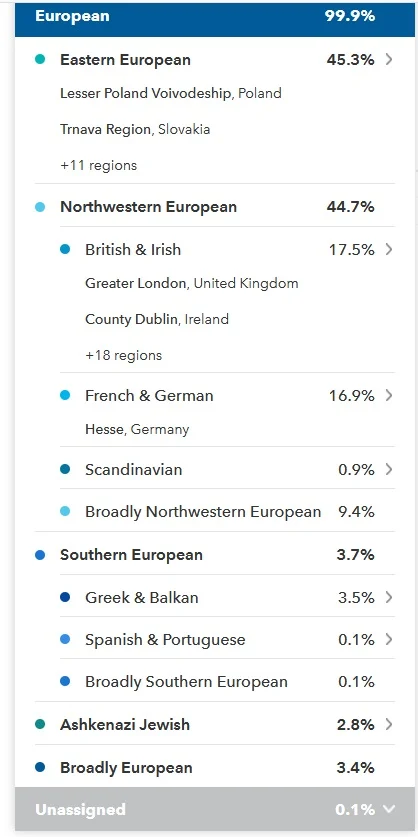
The biggest difference that I see in the results above is that Ancestry DNA detected more Scandianvian DNA (Norway, Sweden) and reported a total of 6%. 23andMe detected only .9% DNA from this region.
Is Ancestry or 23andMe more accurate?
Both Ancestry DNA and 23andMe offer an excellent, high-quality DNA test. There are advantages to the results of both companies, and each company offers a little something extra that the other does not.
It is important to know that our DNA results will rarely exactly match our family trees. This is key because when we are evaluating how accurate our DNA results are, we should know what the test really measures.
The truth is that we don't inherit DNA from all of our ancestors. Parents only pass down 50% of their DNA to their children, which means that after several generations, DNA from distant ancestors might no longer be detectable in someone's genome.
For this reason, we should keep in mind that our DNA results can only show us which regions of the world the DNA that we did inherit from our ancestors most closely matches. DNA tests can't reveal anything about the DNA that we didn't inherit from our parents, grandparents, or any other ancestor.
In addition, our ancestors likely inherited DNA from neighboring regions due to their ancestors' migrations. Our ancestors were a lot like us, in other words, and were sometimes more genetically diverse than we might imagine.
This is the most common reason that a "surprise" region shows up on someone's results. We might know a lot about our family tree, but we don't know everything, and in a sense, that's what makes genealogy and DNA testing so interesting.
DNA results from either Ancestry DNA or 23andMe will provide you an accurate view into where the ancestors from whom you inherited DNA likely lived.
Conclusion
I hope that you have learned more about how to understand your 23andMe or Ancestry results as compared to your results from the other company. As it turns out, they aren't really all that different, and most of the seemingly major differences have easy explanations.
If you have any question about something that you read in this post, or if you would like to share an interesting difference that you noticed in your own results, I would love to hear from you in the discussion below.
Thanks for stopping by!


And
Friday 29th of August 2025
Good info but my half sister's 23andme showed 2.4% Spanish & Portuguese while her ancestry.com showed 12% Spain and some other differences. They are different. Some things similar but others different. But both are correct? That's kind of strange. They can't both be correct. One is more correct than the other. Good explanations though. Thank you.
Wesley Hunt
Tuesday 22nd of July 2025
I have had my DNA tested from Ancestry.com and 23 and Me. Like everyone else, they are quite different although they both agree that my ancestor came from Northern Europe. My family tree goes back several hundred years. With that information and knowledge passed down by my family, I would have to say that Ancestry.com is more correct than 23 ans Me. The biggest example is that 23 and Me has me at 97.3% British and Irish while Ancestry.com has me at 50% Scottish and 43% England and NW Europe. It also shows I am 4% from Denmark which can be explained due to the pesky Vikings. My great grandfather on my mother's side was a Gordon and came to the U.S. from Scotland with his brother. That would line-up with Ancestry's 50% Scottish and 3% Irish due to the close proximity of Ireland and Scotland. 23 and Me also shows 3.6% French and German and 2.7% Spanish and Portuguese where Ancestry shows 0% for both. I like the idea of having my DNA tested by more than one source, but it looks like the two should show more similarities.
Angela Chantler
Wednesday 23rd of August 2023
My Ancestry DNA shows a 15% match to my Uncle. HOwever My Heritage shows 28% DNA match to him. How is this possible?
Kaaren
Friday 23rd of June 2023
Apologies for the double post: I didn't realize that the newest posts were at the bottom and thought I had to recreate it.
Kaaren
Friday 23rd of June 2023
23andme's Ancestry Composition totally aligned with my family history going back two generations. Ancestry's was so not aligned with that history, that I wondered if they'd mixed me up with someone else. The differences were huge not just regionally, but mathematically, i.e., in terms of percentages of same. No lumping of nations in one regional area explains the enormous disparity, not least because they were all contained within recognizably disparate areas of Europe (Eastern, Southern, Central, and Northern). Needless to say, I considered the 23andme report sound, and laughed at Ancestry's.